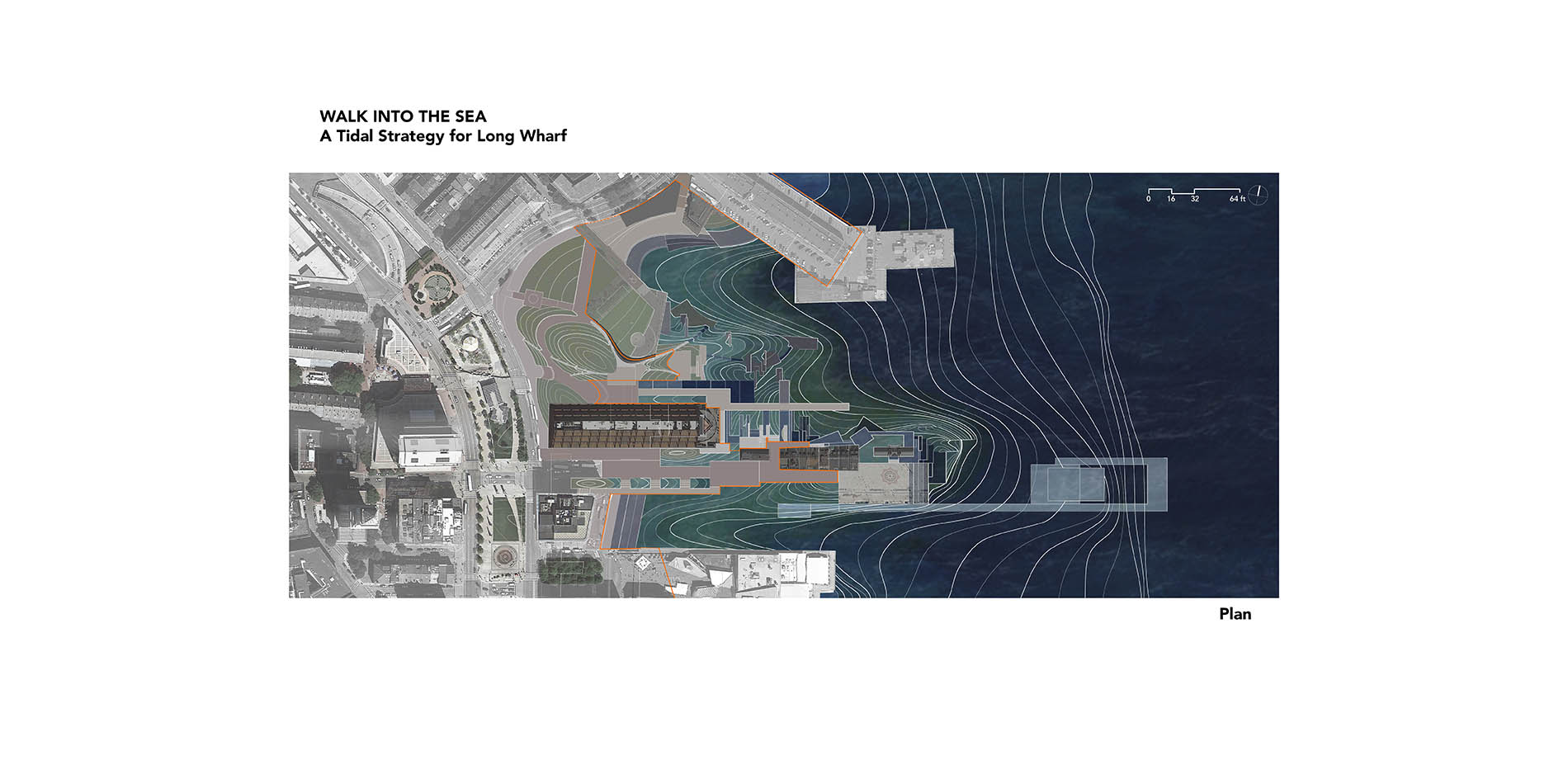
WALK INTO THE SEA PLAN – a Tidal Strategy for Long Wharf
Photo Credit: Zhi Wang, Student ASLA; Xiaoyu Yu
Media: Please submit high-resolution image requests to images@asla.org.
Top: Downtown and Important buildings in danger. Bottom: Boston Harbor and Storm Surge.
Photo Credit: Zhi Wang, Student ASLA; Xiaoyu Yu
Media: Please submit high-resolution image requests to images@asla.org.
Boston Piers and Urban Transformation
Photo Credit: Zhi Wang, Student ASLA; Xiaoyu Yu
Media: Please submit high-resolution image requests to images@asla.org.
People and Water Flow
Photo Credit: Zhi Wang, Student ASLA; Xiaoyu Yu
Media: Please submit high-resolution image requests to images@asla.org.
Precedents Study of How to Make a Stormproof Structure Accessible, Permeable, or Invisible
Photo Credit: Zhi Wang, Student ASLA; Xiaoyu Yu
Media: Please submit high-resolution image requests to images@asla.org.
Strategies to Make a Hybrid Structure on the Hard Infrastructure
Photo Credit: Zhi Wang, Student ASLA; Xiaoyu Yu
Media: Please submit high-resolution image requests to images@asla.org.
Tidal Change. The ground level is deliberately considered to arrange the height from the channel of -31 feet to the stormproof heights of +21 feet
Photo Credit: Zhi Wang, Student ASLA; Xiaoyu Yu
Media: Please submit high-resolution image requests to images@asla.org.
The Dynamic Interaction Between Human Activities and Water Flow
Photo Credit: Zhi Wang, Student ASLA; Xiaoyu Yu
Media: Please submit high-resolution image requests to images@asla.org.
The Arrangement of Plant Communities Adjusting to Water Conditions and Programs
Photo Credit: Zhi Wang, Student ASLA; Xiaoyu Yu
Media: Please submit high-resolution image requests to images@asla.org.
The Experience Sequence Transitioning from Urban Toward the Sea
Photo Credit: Zhi Wang, Student ASLA; Xiaoyu Yu
Media: Please submit high-resolution image requests to images@asla.org.
Top: Hybrid structure of artificial and natural materials—Café, runway and auditorium B – B’. Bottom: Custom House Block—The walkway narrows down and the water is deep C – C’
Photo Credit: Zhi Wang, Student ASLA; Xiaoyu Yu
Media: Please submit high-resolution image requests to images@asla.org.
Top: The end of the Long Wharf—Sloped plaza and monthly flooded musical pavilion wetland D – D’. Bottom: Extension into the sea—The underwater museum and floating deck E – E’
Photo Credit: Zhi Wang, Student ASLA; Xiaoyu Yu
Media: Please submit high-resolution image requests to images@asla.org.
Hybrid Structure Transformation Process: 1.Hard material construction. 2. Catch sediment at high tide. 3. Set sand-fix plants. 4. Elevate entrance to astronomical high-tide level, flooded once a month. 5. Provide unique environment for events/runway. 6. Reduce flood energy at storm.
Photo Credit: Zhi Wang, Student ASLA; Xiaoyu Yu
Media: Please submit high-resolution image requests to images@asla.org.
The Hybrid Structure Catwalk
Photo Credit: Zhi Wang, Student ASLA; Xiaoyu Yu
Media: Please submit high-resolution image requests to images@asla.org.
Height Relieving Terraces
Photo Credit: Zhi Wang, Student ASLA; Xiaoyu Yu
Media: Please submit high-resolution image requests to images@asla.org.


















